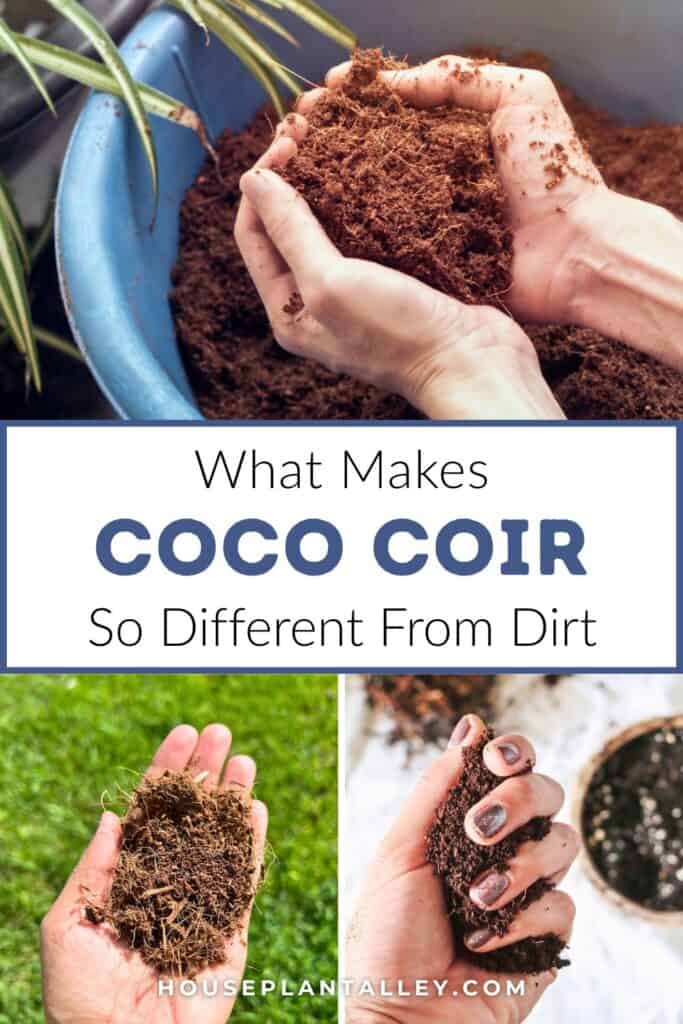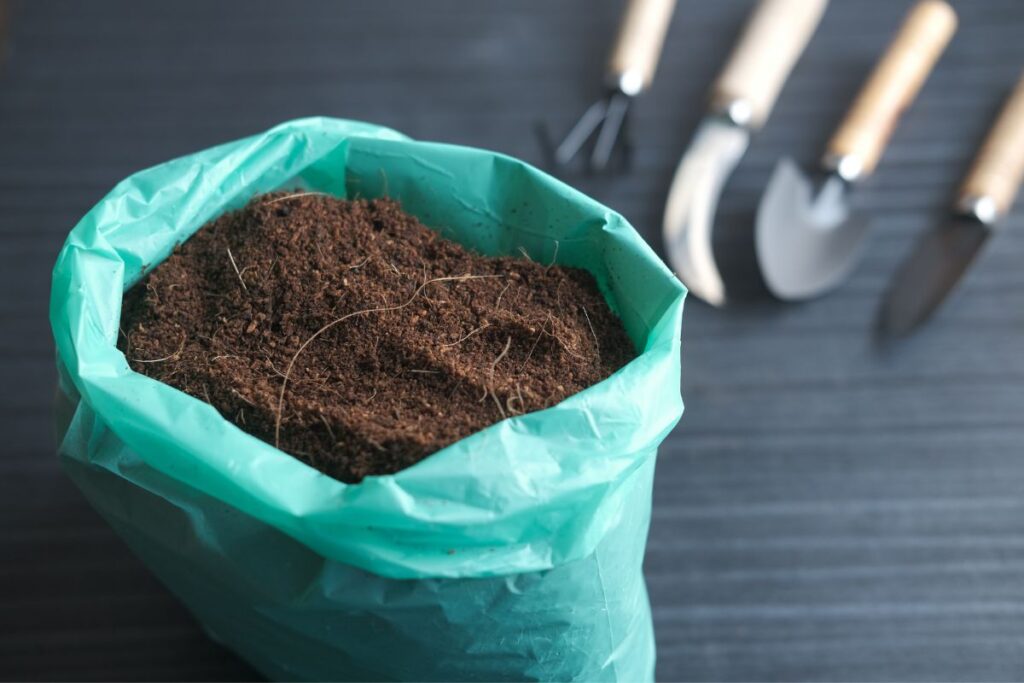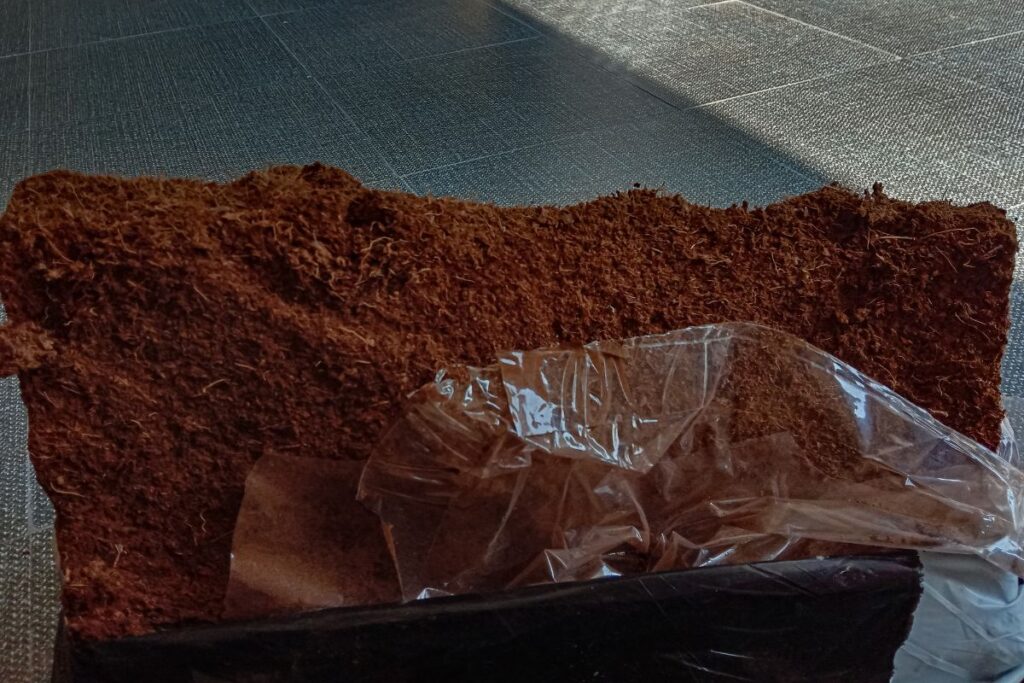If you’re looking for a safe and effective way to improve the health of your indoor plants, look no further than coco coir. This versatile growing medium is made from the fibrous husks of coconut shells and offers a range of benefits that can help your plants thrive.

One of the biggest advantages of using coco coir for indoor plants is its ability to retain moisture without becoming waterlogged. Unlike soil, which can lead to root rot if it becomes too saturated, coco coir allows excess water to drain away while still providing a moist environment for roots to grow in. This can help prevent overwatering and ensure that your plants are getting the hydration they need without risking their health. Plus, since coco coir is all-natural and free from harmful chemicals or additives, you can feel confident that you’re providing a safe and healthy environment for your indoor garden.
Contents
How Is Coco Coir Made?
You’re probably wondering how the heck coco coir is even made, but don’t worry, it’s actually a pretty fascinating process!
Coco coir is made from the fibrous husks of coconuts. The process begins with the harvesting of mature coconuts, which are then split open, and the inner flesh is removed and used for other purposes. The outer husks are then soaked in water for several weeks to soften the fibers and make them easier to separate. Once the fibers have been separated from the husks, they are washed and dried in the sun or using specialized drying equipment.
The dried fibers are then processed into different types of coco coir products, including blocks, mats, and loose fiber for use in gardening and agriculture. The end result is a sustainable and eco-friendly material that can be used in a variety of applications.
Benefits of Using Coco Coir For Indoor Plants
Aerates the Soil
Mixing coco coir into your soil is an excellent way to improve soil aeration, which is vital for healthy plant growth. When you add coco coir to the soil, it creates tiny pockets of air that allow roots to breathe and grow more easily. This means that your plants will have better root development and be able to take up nutrients more efficiently.
Has Good Water Retention
When incorporating coco coir into your potting mix, you’re giving your plants a substrate that has excellent water retention capabilities. This means that you won’t have to water your plants as frequently as before since the coco coir can hold onto moisture for longer periods. Not only does this save you time and effort, but it also ensures that your plants are getting the hydration they need for healthy growth.
In addition to reducing the watering frequency, coco coir also promotes optimal humidity levels in your growing environment. This is because the material itself can absorb and release moisture depending on the conditions of its surroundings. With consistent humidity levels, your plant’s root development will improve, leading to stronger and healthier roots overall.
Inexpensive

Coco coir is an inexpensive option for growers looking to save money on their potting mix. If you’re on a tight budget and want to stretch your gardening dollar, then coco coir is one of the most affordable options available. Unlike other growing media, which can cost a small fortune, coco coir is one of the DIY alternatives that won’t break the bank.
When it comes to frugal gardening tips, using coco coir as a potting mix is one of the most cost-effective substitutes out there. Not only does it provide good water retention for your indoor plants, but it also saves you money in the long run. So if you want budget-friendly solutions for your indoor garden, consider giving coco coir a try!
Renewable and Organic
One fascinating fact about using a renewable and organic substrate, such as coco coir, for your indoor plants is that it can improve their overall health by reducing the risk of plant diseases. Coco coir is a sustainable and eco-friendly alternative to traditional soil, made from the fibrous husks of coconut shells. Its longevity and durability make it an excellent choice for indoor gardening.
In addition to being environmentally friendly, coco coir is compatible with different types of plants and can retain nutrients while balancing soil pH levels. This makes it an ideal growing medium for indoor gardening enthusiasts who want to ensure that their plants receive high-quality care. Comparing coco coir with other soilless growing mediums can help you determine which one is best suited for your particular plant species. With all these benefits in mind, incorporating coco coir into your indoor garden routine may be just what you need to promote healthy growth and long-lasting vitality in your beloved greenery!
Odorless
Coco coir is an excellent alternative to traditional potting soil because it does not have a distinct smell, which makes it ideal for indoor gardening. Not only is the odorless potting mix beneficial for those with sensitive noses, but it also provides a clean and fresh environment for your beloved greenery. Plus, you can use coco coir with hydroponics systems as well.
Related Post:
Can I Use Garden Soil For Indoor Plants?
How to Prepare Coco Coir

Preparing coco coir for use as a growing medium for your indoor plants is a simple process that involves rehydrating and buffering it to create the ideal growing conditions. Here are the steps to follow to prepare coco coir:
- Purchase high-quality coco coir from a reputable supplier.
- Measure out the desired amount of coco coir and place it into a large container, such as a bucket.
- Add hot water to the container until the coco coir is fully submerged. It’s important to use hot water, as this will help to break down the coco coir and speed up the rehydration process.
- Allow the coco coir to soak for about an hour, or until it has fully expanded and become fluffy.
- Drain off any excess water, and then rinse the coco coir thoroughly with fresh water to remove any residual salts.
- Buffer the coco coir by adding a nutrient solution designed for coco coir, or by mixing in a pH-balancing solution such as dolomite lime. This will help to stabilize the pH of the coco coir and prevent it from becoming too acidic, which can be harmful to your plants.
- Once the coco coir has been buffered, it is ready to use. Simply fill your pots or containers with the coco coir and add your plants.
Congratulations! You have successfully prepared coco coir for your gardening needs. Now you can use it as a soil amendment, seed starter, or potting mix. Happy gardening!
Conclusion
In conclusion, coco coir is a fantastic alternative to traditional potting soil that can provide numerous benefits for your indoor plants. So why not give it a try? Your green thumb will thank you!
